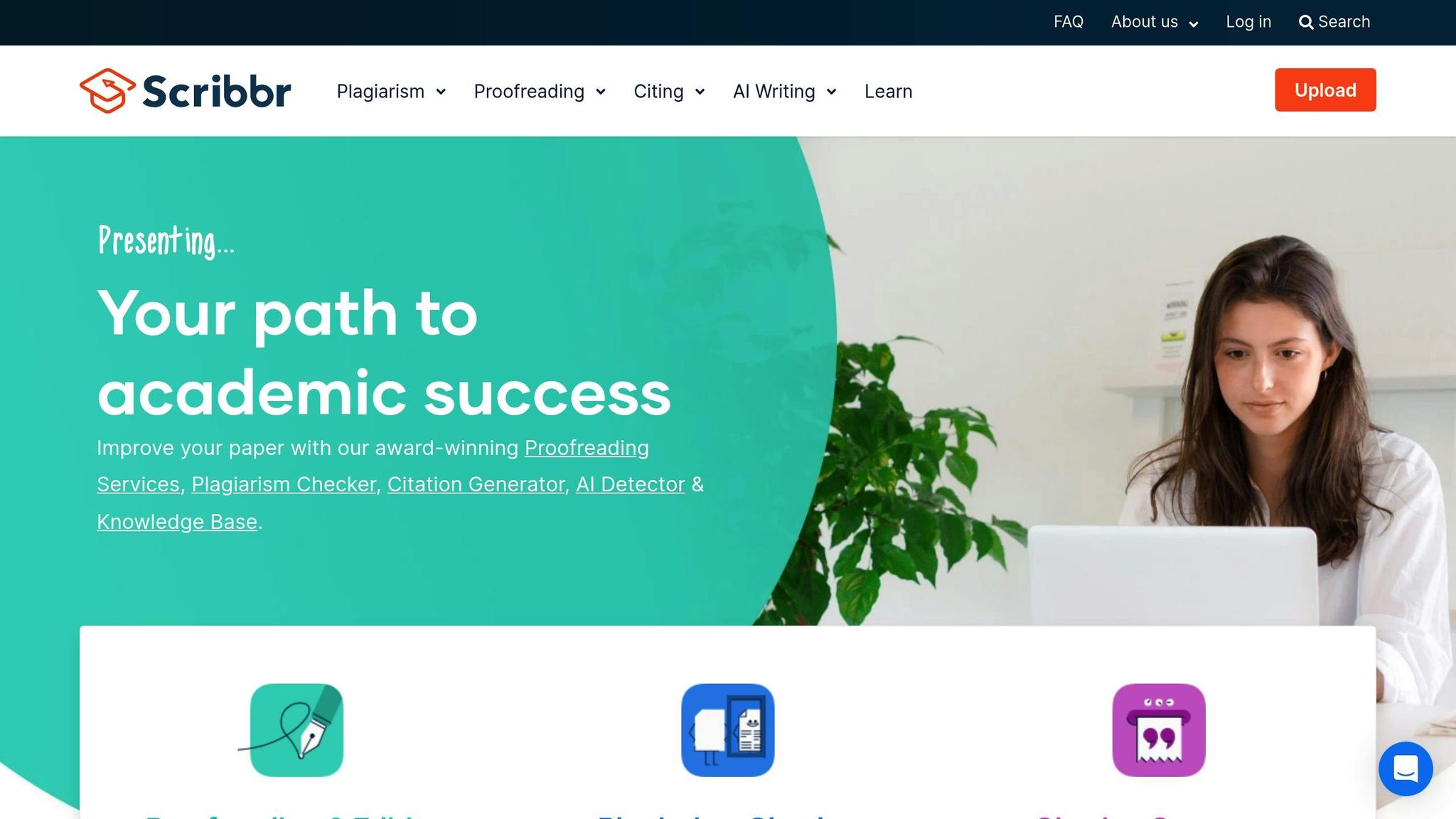Want to gather stakeholder feedback but unsure which method to use? Here's the deal: qualitative feedback dives deep into emotions and motivations, while quantitative feedback focuses on measurable data and trends. Both methods have distinct strengths and challenges, and choosing the right one (or a mix of both) depends on your goals.
Key Takeaways:
- Qualitative Feedback: Best for understanding the "why" behind opinions. Methods include interviews, focus groups, and observations. Offers detailed insights but is time-intensive and harder to scale.
- Quantitative Feedback: Ideal for tracking trends and performance. Uses surveys, ratings, and metrics. Scalable and data-driven but lacks context and depth.
Quick Comparison:
| Aspect | Qualitative Feedback | Quantitative Feedback |
|---|---|---|
| Purpose | Understand emotions and reasons | Identify patterns and trends |
| Data Type | Open-ended, non-numerical | Structured, numerical |
| Strengths | Offers detailed insights | Scalable and statistically reliable |
| Challenges | Time-consuming, prone to bias | Lacks context, needs large samples |
Pro Tip: Combine both methods for well-rounded insights - qualitative for depth, quantitative for breadth. Tailor your approach based on your project's needs, timeline, and resources.
Quantitative vs. Qualitative Research: The Differences Explained | Scribbr 🎓

1. Qualitative Feedback Methods
Qualitative feedback focuses on gathering non-numerical insights to better understand stakeholder experiences. These methods dig into the "why" and "how" behind opinions, offering a deeper perspective than numbers alone. Below, we’ll explore the types of qualitative data, the depth of insights they provide, and their practical applications.
Data Type
Qualitative data comes in various forms, including open-ended survey responses, interview transcripts, written feedback, audio recordings, and video content. Video recordings, for example, allow observers to pick up on body language, facial expressions, and group dynamics - details that written or numerical data can’t capture. Together, these types of data provide a well-rounded view of how stakeholders think and feel.
Depth of Insights
The real strength of qualitative feedback is its ability to uncover the emotions and motivations that drive stakeholder behavior. While quantitative surveys can highlight trends, qualitative methods dig into the reasons behind those trends. For instance, a survey might show dissatisfaction with a product, but interviews could reveal that the issue stems from inadequate training or a confusing interface. This kind of context helps project managers address the root causes of problems instead of just treating surface-level symptoms.
These methods also open the door to unexpected insights. They can reveal creative solutions, hidden risks, or opportunities that structured surveys might miss. For example, during an interview, a stakeholder's frustration might lead to broader organizational concerns being uncovered, offering actionable insights that can shape strategic decisions.
Use Cases
Qualitative feedback is especially useful in the early stages of a project when it’s crucial to understand stakeholder needs and expectations. For example:
- Requirements Gathering: One-on-one interviews can reveal functional needs that might not emerge in a standard survey.
- Change Management: Focus groups can provide insights into stakeholder emotions and identify the kind of support they need.
- Problem Solving: Exit interviews or discussions with key influencers can uncover the root causes of challenges that quantitative data might overlook.
- Post-Implementation Reviews: While usage statistics show how widely a new system is being adopted, interviews and focus groups can reveal whether stakeholders truly find it valuable and where improvements are needed.
Challenges
Despite its benefits, qualitative feedback comes with challenges. Collecting and analyzing this type of data is time-consuming and resource-intensive. Conducting interviews, running focus groups, and reviewing audio or text data requires effort, expertise, and patience.
Bias is another hurdle. The way a facilitator asks questions or how an analyst interprets responses can unintentionally influence the findings.
Scalability also poses a problem. Unlike quantitative surveys, which can quickly gather input from large groups, qualitative methods are harder to scale and can be costly when dealing with a broad audience.
Lastly, tracking progress over time with qualitative insights can be tricky. Quantitative metrics easily show trends, but qualitative findings are more nuanced and harder to compare across different time periods or stakeholder groups.
2. Quantitative Feedback Methods
Quantitative feedback methods focus on gathering measurable, numerical data to inform decisions about stakeholder satisfaction, project outcomes, and strategic planning. This approach relies on specific types of data, which are outlined below.
Data Type
Quantitative data is expressed through numbers, ratings, percentages, and metrics, making it easy to measure and track over time. Common examples include survey results using Likert scales (e.g., 1-5 or 1-10 ratings), Net Promoter Scores (NPS), customer satisfaction scores (CSAT), multiple-choice questions, and digital platform usage analytics.
For instance, automated email surveys can collect satisfaction ratings from thousands of stakeholders at once, while web analytics track user behavior patterns without requiring direct input. These methods are highly scalable, making them ideal for comparing performance across departments, time periods, or audience segments. By leveraging this measurable data, organizations can use predictive analysis to make informed decisions.
Depth of Insights
Quantitative methods excel at identifying patterns, trends, and correlations in large datasets, providing a clear picture of what is happening. This statistical approach complements qualitative methods by offering a broader view, making it easier to spot trends that might otherwise go unnoticed.
The strength of quantitative feedback lies in its statistical reliability, which helps organizations determine whether changes are meaningful or just random fluctuations. This data-driven approach supports decision-making and resource allocation based on solid evidence rather than subjective opinions.
Historical quantitative data is particularly useful for forecasting future trends, identifying potential risks before they escalate, and measuring the effectiveness of interventions. However, while it’s great at showing what’s happening, it often lacks the context needed to explain why those patterns exist.
Use Cases
The measurable nature of quantitative feedback lends itself to a variety of applications. It’s particularly effective for performance monitoring, establishing benchmarks, engaging with broad audiences, and assessing risks. Examples include regular pulse surveys, business performance reviews, and compliance checks.
One key use is baseline establishment. Before rolling out major changes or new initiatives, organizations can use surveys to measure current satisfaction levels, usage patterns, or performance metrics. These benchmarks provide a point of comparison for evaluating future improvements.
Quantitative feedback is also valuable for risk assessment and compliance monitoring. Consistent numerical ratings can help detect declining satisfaction levels early, allowing organizations to address issues before they worsen. Additionally, metrics ensure uniform evaluations across different teams, regions, or business units.
Challenges
Despite its advantages, quantitative feedback isn’t without challenges. Poorly designed surveys or unclear rating scales can produce misleading results, making it crucial to invest time and effort into creating well-structured questionnaires.
Low response rates and data interpretation issues are common hurdles. Participation rates often fall short of expectations, which can lead to sampling bias. On top of that, analyzing raw data requires statistical expertise to draw meaningful conclusions. Misinterpreting correlations as causation can lead to flawed strategies and decisions.
Another limitation is the lack of context. While quantitative data can highlight problems - like declining satisfaction scores - it doesn’t explain the underlying reasons. This often necessitates follow-up qualitative research to uncover root causes, which can delay solutions and risk addressing only surface-level issues.
sbb-itb-97f6a47
Advantages and Disadvantages
When comparing qualitative and quantitative methods, it's essential to consider the trade-offs each brings to stakeholder engagement. Both approaches have their own strengths and weaknesses, which can shape the insights they provide.
| Aspect | Qualitative Methods | Quantitative Methods |
|---|---|---|
| Advantages | • Offers in-depth insights into the "why" and "how" behind opinions • Captures the subtleties of human behavior • Flexible enough to explore unexpected findings • Provides a detailed understanding of attitudes and experiences |
• Produces measurable, objective data that's easy to analyze • Identifies trends and ensures statistical reliability • Scales well for large populations • Establishes clear benchmarks for tracking performance • Often cost-efficient for engaging broad audiences |
| Disadvantages | • Time-consuming due to interviews and focus groups • Difficult to scale and generalize across larger groups • Prone to researcher bias during analysis • May highlight broad areas for improvement without offering specific metrics |
• Can lack depth, missing subtle human behaviors • Requires large sample sizes for dependable results • Risk of response bias, with participants giving socially desirable answers • May oversimplify complex issues by focusing on numbers • Needs statistical expertise for accurate interpretation |
Practical Considerations for Stakeholder Engagement
The choice between qualitative and quantitative methods often depends on the context and goals of the research. Quantitative methods, for example, are excellent for identifying trends and benchmarking performance, but they can fall short in uncovering the root causes behind the numbers. For instance, a drop in satisfaction scores might point to a problem, but without qualitative follow-up, the underlying issues - like poor communication or limited resources - might remain unclear. This need for additional qualitative research can delay solutions and add to costs.
On the other hand, qualitative methods provide rich, detailed insights but are harder to scale. Conducting focus groups or in-depth interviews across multiple departments or regions can quickly become expensive and time-consuming. The lack of standardization in qualitative data collection also complicates comparisons across different groups or time periods.
Both approaches come with their own analytical hurdles. Quantitative methods demand statistical expertise to avoid misinterpretation, while qualitative findings require careful handling to reduce bias. Additionally, the structured nature of quantitative studies, such as surveys and rating scales, can sometimes produce artificial results. These formats don't always reflect real-world decision-making, and participants may not have the chance to explain their answers or clarify ambiguities in the questions.
Conclusion
Deciding between qualitative and quantitative feedback methods depends on what you aim to achieve with stakeholder engagement. Each method has its strengths, and knowing when to use them can mean the difference between gathering actionable insights and collecting data that falls flat.
Quantitative methods excel when you need clear, measurable data. They’re ideal for setting benchmarks, monitoring performance over time, and providing concise metrics for executive reviews. These methods are efficient and scalable, making them perfect for tracking progress and identifying trends.
Qualitative methods, on the other hand, are invaluable for digging deeper into the "why" behind stakeholder responses. They’re particularly helpful in the early stages of a project - when you’re defining problems, exploring new ideas, or addressing issues that numbers alone can’t explain. For complex relationships or sensitive topics, qualitative feedback offers the nuance and depth necessary to understand stakeholder perspectives fully.
Often, the best results come from combining both approaches. Start with qualitative feedback to uncover and define key challenges, then use quantitative methods to measure progress and track outcomes on a larger scale. Alternatively, quantitative data can highlight problem areas, which qualitative research can then explore in greater detail to uncover root causes and inform targeted solutions.
Your choice should also consider factors like project timelines, budgets, and the diversity of your stakeholders. Tight schedules and limited resources might push you toward quantitative methods, while major organizational changes or new initiatives often call for the richer insights qualitative methods provide.
For more tailored strategies, expert consulting can help align feedback methods with your specific goals. The Top Consulting Firms Directory connects you with experts in organizational change and stakeholder engagement who can design feedback systems tailored to your needs.
Ultimately, the goal isn’t to chase perfect data but to gather insights that strengthen stakeholder relationships and improve business outcomes. By blending the strengths of both methods, you can create a feedback system that bridges long-term strategy with everyday management, ensuring your approach is both practical and impactful. Choose the method - or combination - that best supports your objectives.
FAQs
What’s the best way to combine qualitative and quantitative feedback for better stakeholder insights?
To make the most of stakeholder feedback, start by leveraging quantitative methods to identify patterns and trends in your data. These methods can reveal the "what" – the major issues or areas of focus. Then, pair this with qualitative feedback to dig deeper and understand the reasons behind those numbers. For instance, while survey results might pinpoint key concerns, tools like interviews or focus groups can shed light on the "why" behind those concerns.
Combining these two approaches gives you a well-rounded perspective. Quantitative data paints the broader picture, while qualitative insights bring in the details and context. This blend is particularly useful for navigating complex decisions, as it ensures you're considering both overarching trends and individual stakeholder viewpoints.
What mistakes should I avoid when gathering and analyzing qualitative feedback?
When gathering and analyzing qualitative feedback, steering clear of common errors is crucial to ensure the reliability of your insights. One major challenge is bias - this can creep in if you choose participants who don’t represent your target group, rely on interviewers with preconceived notions, or focus solely on familiar issues instead of exploring fresh viewpoints.
Other common traps include confirmation bias, where data is interpreted to fit pre-existing beliefs, and observation bias, which can occur when participants are influenced by leading or suggestive questions. Additionally, feedback processes that are too narrow in scope or difficult for participants to engage with can limit the value of your findings. To achieve meaningful and accurate insights, prioritize diversity in your feedback pool and use methods that are thoughtfully designed and free from bias.
How can I design quantitative feedback surveys to reduce bias and ensure accurate results?
To gather reliable and unbiased data in quantitative surveys, start by employing random sampling methods such as simple or stratified random sampling. These approaches help ensure your sample accurately reflects the broader target population.
When designing your survey, focus on crafting questions that are clear, straightforward, and neutral. Avoid any wording that might lead or sway participants, as this could distort their responses.
Maintaining respondent anonymity is another key step. When people feel secure about their privacy, they’re more likely to provide honest answers. Increasing your sample size can further enhance the reliability of your findings, reducing the margin of error. Lastly, steer clear of jargon or overly technical language - this ensures your survey is easy to understand for everyone, regardless of their background. Following these practices will help you collect more dependable insights from your audience.


